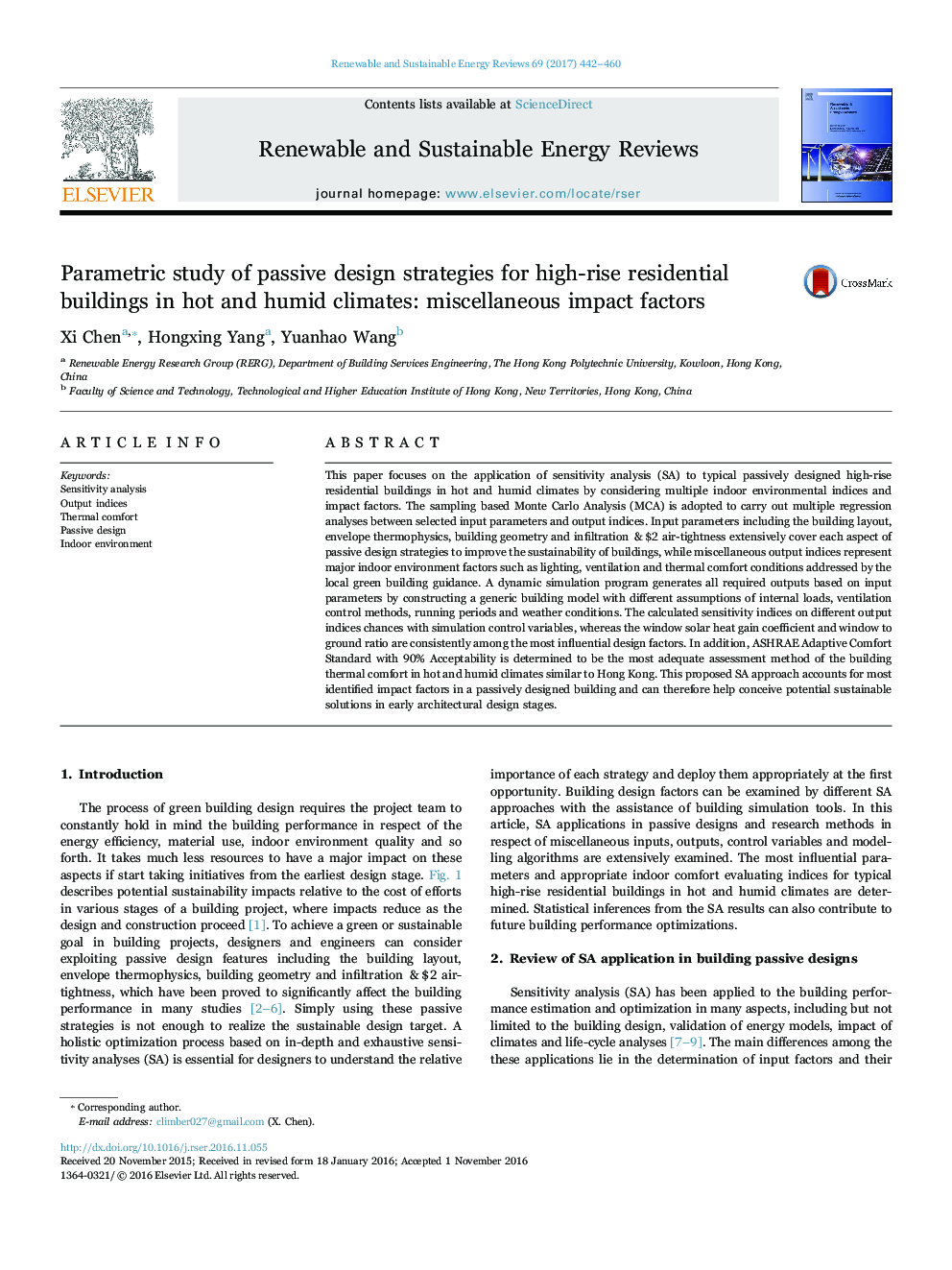| Article ID | Journal | Published Year | Pages | File Type |
|---|---|---|---|---|
| 5483345 | Renewable and Sustainable Energy Reviews | 2017 | 19 Pages |
Abstract
This paper focuses on the application of sensitivity analysis (SA) to typical passively designed high-rise residential buildings in hot and humid climates by considering multiple indoor environmental indices and impact factors. The sampling based Monte Carlo Analysis (MCA) is adopted to carry out multiple regression analyses between selected input parameters and output indices. Input parameters including the building layout, envelope thermophysics, building geometry and infiltration & air-tightness extensively cover each aspect of passive design strategies to improve the sustainability of buildings, while miscellaneous output indices represent major indoor environment factors such as lighting, ventilation and thermal comfort conditions addressed by the local green building guidance. A dynamic simulation program generates all required outputs based on input parameters by constructing a generic building model with different assumptions of internal loads, ventilation control methods, running periods and weather conditions. The calculated sensitivity indices on different output indices chances with simulation control variables, whereas the window solar heat gain coefficient and window to ground ratio are consistently among the most influential design factors. In addition, ASHRAE Adaptive Comfort Standard with 90% Acceptability is determined to be the most adequate assessment method of the building thermal comfort in hot and humid climates similar to Hong Kong. This proposed SA approach accounts for most identified impact factors in a passively designed building and can therefore help conceive potential sustainable solutions in early architectural design stages.
Related Topics
Physical Sciences and Engineering
Energy
Renewable Energy, Sustainability and the Environment
Authors
Xi Chen, Hongxing Yang, Yuanhao Wang,
